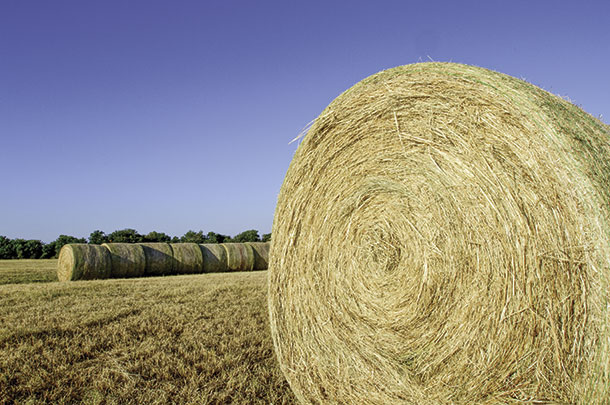Making decisions on any agricultural enterprise can be challenging. Decisions such as purchasing new equipment, how long to retain ownership of calves or even figuring out how to properly calibrate a sprayer can leave producers feeling frustrated. Every day, we face these types of decisions while managing our operations. Decisions become much easier to make when we can take the emotion out of the equation and put the consideration down on paper.
With continuous technology advancements, Noble Research Institute consultants developed a series of online decision support calculators to help farmers and ranchers. These calculators range from chemical sprayer and planter calibration to determining the cost of wasted hay in different hay rings and are conveniently located within one convenient, user-friendly app. The free mobile app, Ag Tools, can be downloaded from the Apple App Store or Android Google Play.
The following are two examples of situations in which you might find one of these calculators helpful.
Evaluate feasibility of purchasing an overhead feed bin
There are advantages to having an overhead feed storage bin and using a truck-mounted feeder to deliver feed to cattle on pasture. Cost savings, usually about $20 per ton, are typically associated with purchasing feed in bulk rather than in bags. Additionally, an overhead feed bin allows the ability to use byproduct feeds. The cost differential between range cubes and byproduct feeds can be substantial – oftentimes greater than $60 per ton, which is in addition to the bagging costs.
However, it’s important to evaluate whether the benefits outweigh the costs of purchasing these pieces of equipment. The Overhead Feed Bin Calculator takes into account the lifespan of the equipment and taxable depreciation. To be as accurate as possible, the developers of this tool took into account the tax depreciation of the equipment across a life of 10 years. For purposes of the calculator, the lifespan was presumed to be 10 years, although the equipment could last twice as long with proper care and maintenance.
Additionally, for those who do not have on-site storage for their feed, this tool will calculate the costs of trips to the feed store, taking into account the fuel efficiency of the truck and cost of fuel. No salvage value was assigned, since it can be highly variable. If a salvage value for the equipment is determined, the number of years to break even on the purchase cost of the equipment would be even less.
 The Hay Ring Waste Calculator allows producers to compare the economics of using four common hay rings. Photo courtesy of Noble Research Institute.
The Hay Ring Waste Calculator allows producers to compare the economics of using four common hay rings. Photo courtesy of Noble Research Institute.Find out cost of hay ring waste
Another example of a calculator in the app is the Hay Ring Waste Calculator. This tool compares the economics of the four most common hay rings based on the amount of waste each ring is expected to generate. If the user knows the cost, weight of the bale and how many bales are fed each month and for how many months, then they can determine the cost of the wasted hay from each ring. Hay waste is lowest from highest for the following ring types: modified cone hay ring, sheeted sided hay ring, economy open-sided ring and poly cone feeder, (5.3%, 13%, 20.5% and 21% waste, respectively).
Using the following assumptions, we will demonstrate an example scenario: A producer with 30 cows will feed 120 bales of hay that weigh 1,000 pounds and cost $50 each during a four-month period. Annually, the modified cone ring feeder will waste $318 worth of hay (53 pounds x 120 bales = 6,360 pounds), while the sheeted, economy and poly rings will waste $780, $1,230 and $1,260 worth of hay, respectively. In this example, the decreased hay waste of the modified cone ring can pay for the difference in cost of the modified hay ring versus the other types. Additionally, less hay has to be baled and stored on an annual basis.
Other calculators available
These calculators are two of the 18 calculators available in the app. Other calculators assist producers in determining breeding and calving dates and value of gain on animals, as well as calculators to assist in wildlife and pecan orchard management. These tools are designed to assist producers in decision-making and day-to-day production practices, helping them remain sustainable and profitable.
Making information more accessible and on-demand can enable producers to make more informed, confident decisions faster. The Ag Tools app delivers the information producers need when they need it, and it is a must-have for any land steward, farmer or rancher.










